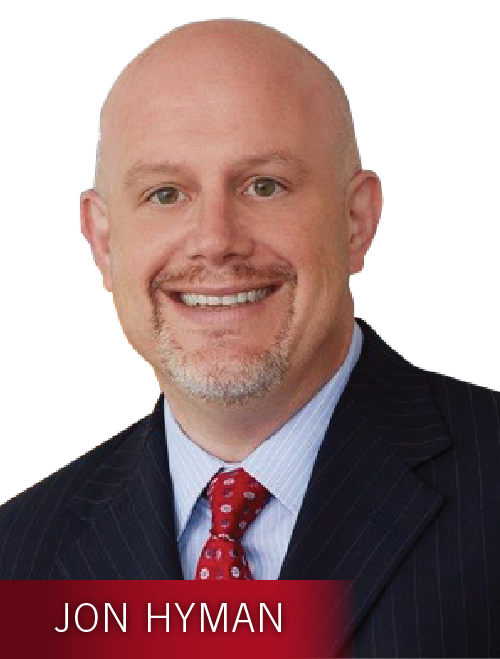I recently was reminded of just how new the field of genetics is and how the discussions about genetic privacy are fascinating and relevant in the workplace. That’s where genetic-testing benefits or perks are sometimes touted as a way for employees to learn about genetic risks they have and plan for them accordingly.
I finally started reading The Gene — a New York Times bestseller by Siddhartha Mukherjee from 2016. The Gene is about the history of genetic theory and history from Aristotle and Pythagoras to Charles Darwin and Gregor Mendel and beyond. It also explores darker parts of genetic history like the eugenics movement in America and Nazi Germany’s attempt to create a so-called genetically superior race.
This 550-page-long page-turner was in part a celebration of significant scientific discoveries in genetics and in part a warning that people are capable of using these discoveries and theories to do major harm.
In 1976, Herb Boyer and Robert Swanson founded biotech company Genentech and created many important medicines out of genes, including insulin, and patented these creations. But their contemporaries wondered, is it right to patent a method you discovered while funded by public research money? Also, can you patent something that naturally is a part of every person’s body? Even now, many people have ethical objections to patenting genes.
In the 1800s Charles Darwin observed different-looking finches of the same species. He was fixated on their similarities, not their differences. This led to important discoveries in hereditary theory, mainly that these different-looking birds came from the same ancestor and adapted over time to different environments. The same could be applied to people, who were more similar than different and came from the same common ancestor.
On the other side of the coin, Darwin had a cousin, Francis Galton, who was also a scientist. He was more fixated on people’s differences than similarities and coined the term “eugenics” in 1883, according to The Gene. This was the idea that some people’s genes were better than other’s and that through selective breeding, humankind could keep only the best genes in its genepool. His idea eventually led to a eugenics movement in America in which undesirable people were forcibly made infertile so that their inferior genes were not continued. These “undesirables” included African Americans, white European immigrants and anyone deemed “feebleminded” by the courts, the book notes.
These are older examples from the book, but obviously a lot has happened from the 1980s on, like the Human Genome Project, experiments (some more successful than others) in gene therapy and many services that offer easy-to-use genetic testing kits like 23andMe, Ancestry DNA and Vitagene.
Genetic tech has entered the workplace. Some companies are offering genetic testing as a perk. Last March, Rep. Virginia Foxx introduced a bill, HR 1313, which would allow employers to offer health insurance premium rebates to employees who take part in workplace wellness programs, many of which include genetic screenings.
This led to some controversial reactions when some people worried that their companies could financially coerce them into genetic testing. News site Vox reported that those who opt out would have to pay $5,400 more a year for the average family plan than those who opt in, based off 2016 insurance price data. This sum might make opting out not viable to some employees. Advocates of the bill stressed that employees would have the option of opting in or opting out.
Let’s take this scenario above. The fundamental question, it seems, is that if this participating employee pays $5,000 less than a non-participating employee, is it truly optional? Is there a difference between a penalty and a reward in this context?
I’m inclined to say no, especially if genetic information is involved. Others would strongly disagree.
Here’s the most recent news on HR 1313 I could find, according to the DNA Geek:
“The bill has been lingering in various committees in the House of Representatives since it was introduced in March [2017]. It passed the Committee on Education and the Workforce back in the spring, but it’s been stagnating in the committees on Ways and Means and on Energy and Commerce since then. … On 11 December 2017, both committees ‘discharged’ the bill, meaning that they released it to be considered by the full House of Representatives without voting on it themselves. The bill is now on the House schedule to be considered for passage.”
The next steps would be passed by the House, passed by the Senate and then signed by the president.
Whatever your take is on HR 1313, it shows how tricky and messy issues involving genetic security and privacy are. There are others more qualified than me to talk about the controversies and disagreements in the genetics space. But for employers and employees, this debate over personal health and genetic information is noteworthy.
In the United States, the law that governs genetic privacy is the Genetic Information Nondiscrimination Act. GINA makes it illegal to discriminate people based on their genes in certain employment decisions and health insurance, but not outside those realms, like in life, disability or long-term care insurance. There have been cases, for example, where women have been denied life insurance as recently as 2016 because they tested positive for the breast cancer gene, BRCA1.
As LifeInsurance Post, a community of life insurance experts, warns, “The negatives of genetic discrimination far outweigh the positives. Thus, it’s important that you seriously consider whether you need to go for genetic testing or not. At the end of the day, it’s comes down to choosing between your life and life insurance.”
Even if you take a test in the workplace and your results cannot impact your employment or your health insurance, it could impact other types of insurance.
To get the life insurance industry’s point of view, by the way, read this Economist article, “The gene is out of the bottle: Genetic Testing Threatens Insurance Industry.”
“Asymmetry of information — when the consumer knows more than the insurer — is the industry’s worst nightmare. If predictive tests further improve and become more common while non-disclosure rules stay in place, some insurance products might eventually die out,” writes the author. This article does a good job at explaining the concerns of the insurance industry, while it also acknowledges what a tricky ethical area this is. Since the role of genes in disease development is still being studied, many people could be wrongly penalized for having a certain gene. The truth is that many other factors, like environment and chance, also impact whether or not a person will ultimately develop the disease.
 Genetic privacy isn’t a fear that’s going away; it’ll only grow as our capability and understanding of genetics increases. It’s also not a fear based in fiction. Historically influential forces in society have used genetics to rationalize doing horrific things.
Genetic privacy isn’t a fear that’s going away; it’ll only grow as our capability and understanding of genetics increases. It’s also not a fear based in fiction. Historically influential forces in society have used genetics to rationalize doing horrific things.
As someone who talks to employers on a regular basis, I believe most companies would not lean toward unethical use of their employees’ genomes. That being said, even a few bad eggs would be troublesome.
“This book is the story of the birth, growth, and future of one of the most powerful and dangerous ideas in the history of science,” writes Mukherjee in The Gene. Let’s not underestimate the power of this idea. As employers increasingly see a place for genetic tests somewhere in their organization, some employees may be very enthusiastic to take advantage of them while others may be justifiably weary.
Andie Burjek is an associate editor at Workforce. Comment below or email editors@workforce.com.

 The first of these cases settled on the eve of their respective trials; the third resulted in a plainiff’s verdict.
The first of these cases settled on the eve of their respective trials; the third resulted in a plainiff’s verdict.








 Genetic privacy isn’t a fear that’s going away; it’ll only grow as our capability and understanding of genetics increases. It’s also not a fear based in fiction. Historically influential forces in society have used genetics to rationalize doing horrific things.
Genetic privacy isn’t a fear that’s going away; it’ll only grow as our capability and understanding of genetics increases. It’s also not a fear based in fiction. Historically influential forces in society have used genetics to rationalize doing horrific things.










